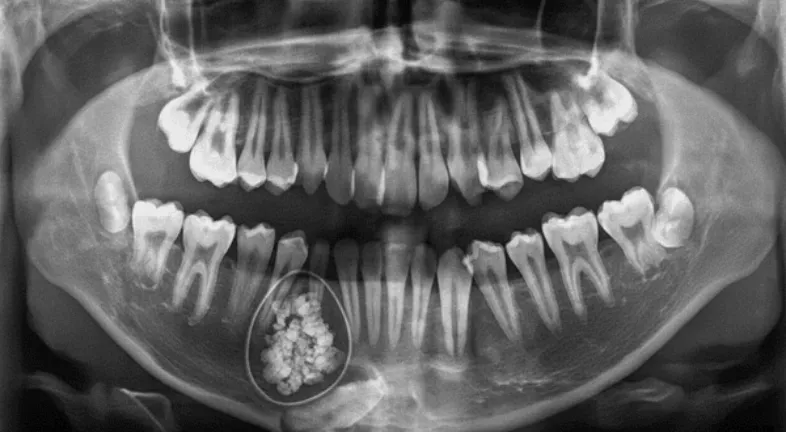
Table of contents
Crooked teeth leading to a misaligned jaw may cause various problems, including a mild or severe underbite. Mild cases may not need any work, while severe cases may have the jaw protruding so far that it looks unnatural. The cost to straighten teeth for adults can run into thousands of pounds for traditional braces. However, there is a more affordable alternative with clear braces—and you don’t even have to leave home!
An underbite is when the lower teeth project out past the upper teeth. It is more than a cosmetic issue as it can cause physical problems when biting food and even talking. It may also lead to dental health problems, including chipping or breaking your front teeth.
The effects of an underbite can be serious. It is often the case that individuals with underbites feel self-conscious, which, in turn, can lead to low self-esteem and anxiety. Not only can the problem take a toll on mental health, but it can cause other health issues such as:
An underbite can cause heavy snoring and mouth breathing.
When the jaw is incorrectly aligned, it may obstruct breathing, which in some cases may lead to sleep apnoea. In this potentially serious condition, individuals can stop breathing hundreds of times a night, making it difficult to sleep well. Poor sleep can lead to daytime fatigue and over the long term, depression. Sleep apnea is more common than you might think.
Halitosis is a chronic condition that an underbite can cause. Heavy mouth breathing and mouth snoring are two symptoms related to the problem, causing dryness in the mouth and throat, which allows the bacteria that cause bad breath to grow.
Temporomandibular Joint Disorder (TMD) is another potential symptom of an underbite. The TMJs are the jaw joints that can become painful if the jaws are misaligned.
You may develop an underbite due to:
You primarily inherit the shape and size of your teeth and how they grow from your parents or relatives. If someone else in your family has had an underbite, it’s more likely a genetic condition.
A habit in childhood can cause a problem in the future. For most children, occasional habits don’t cause any issues, but extended habits like thumb sucking or using a dummy long-term can lead to an underbite.
A tumour is an abnormal growth of cells that can cause the jaw to change shape. This change could also lead to an underbite.
Thankfully, underbites can be effectively treated using orthodontic methods, such as braces or aligners. While most cases can be addressed without surgery, severe underbites might necessitate surgical intervention. It’s worth noting that treatment for underbites is not limited to children; adults can also benefit significantly from underbite correction. All the treatments available require commitment as there is no quick-fix solution.
Traditional braces are one of the ways of clearing up issues with teeth alignment or underbites. Traditional braces consist of brackets that are cemented to the teeth. A wire is threaded through the brackets and tightened regularly (typically every month) to move the teeth into their correct positions. Treatment may take around two years, and you’ll have to wear a retainer for some time afterward to keep teeth in their new straightened positions.
Although effective, braces are uncomfortable and are not very attractive. Also, they cannot be removed, so cleaning teeth properly can become difficult. Additionally, every month, braces must be tightened, which requires setting aside time and making an effort for patients to visit the dentist as needed.
Underbite correction is possible with clear aligners. One of the benefits of transparent aligners, including those available from Caspersmile, is that they are virtually invisible and undetectable. For adults who may be self-conscious about wearing braces, clear aligners are a great solution.
Furthermore, as they are tailor-made to fit over your teeth, they are much more comfortable to wear than metal braces. No more rubbing the soft tissues in your mouth, causing ulcers and soreness.
If you have done your research, you will be aware that costs vary significantly for clear braces in the UK, with prices ranging from £2,000 to £6,000. However, with Caspersmile’s clear aligners, you can drastically reduce this cost.
Curated the best for your knowledge
 Odontomas: What They Are and How They're Treated
Odontomas: What They Are and How They're TreatedSome dental conditions are quiet. Too quiet, in fact. Odontomas fall into that category. They rarely make noise, yet they change things beneath the surface. And people usually have no idea about them. While malocclusions, teeth shifting, discoloration, or other cosmetic dental issues are fairly well known, odontomas are not. So, an odontoma is technically a type of tooth tumor. It’s benign, harmless, but oddly structured. Hence, it can interfere with tooth eruption, displace teeth, or cause swelling. However, there’s more to it. Here’s a deeper dive.
Read More.webp) Gingivitis Treatment: How to Reverse Early Gum Disease
Gingivitis Treatment: How to Reverse Early Gum DiseaseGingivitis tends to creep up quietly, usually after a stretch of rushed brushing or nights where flossing just slips your mind. The first sign is often bleeding when you spit toothpaste into the sink. That moment makes people Google how to cure gingivitis, which is honestly the right instinct. Early gum inflammation happens because plaque irritates the tissue around the teeth. If you respond quickly, it is fully reversible. Most cases improve quickly with proper cleaning, hydration and small tweaks in daily habits. The key is not ignoring those early red or puffy gum signals.
Read More.webp) Metallic Taste in Mouth: Causes and How to Get Rid of It
Metallic Taste in Mouth: Causes and How to Get Rid of ItHaving metal taste in the mouth first thing in the morning can be an unexpected experience. You wake up, take a swallow, and suddenly have a metallic taste in your mouth, as if you'd been chewing on a handful of change. It's annoying, a little scary, and sometimes for no apparent reason. For some people, it will be nothing but a minor nuisance; others may fall into the late-night goose chaser. Sometimes it's a sign that there is something wrong with your braces; other times, it could mean that there is something wrong with one of your teeth. But here's the good news: Most metallic tastes are temporary, harmless, and can be treated or resolved. So let's take a closer look at the possibilities.
Read MoreQuick Links

Heading